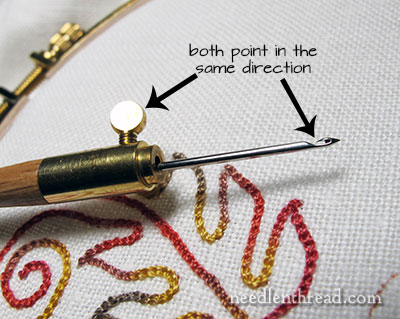November 26, 2013
Thread Talk: Mulberry Silks
The thread junkie in me can’t resist sharing this gorgeous palette of silk embroidery threads with you.
It’s just so … autumny.
I don’t think “autumny” is a word. But look:
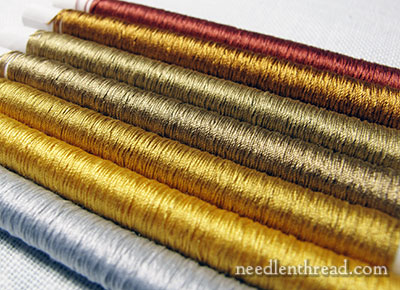
November 26, 2013
The thread junkie in me can’t resist sharing this gorgeous palette of silk embroidery threads with you.
It’s just so … autumny.
I don’t think “autumny” is a word. But look:

November 25, 2013
Iron-on embroidery design transfers fall into a love-hate category for me.
I love the idea of being able to iron an embroidery design straight onto a piece of fabric, without having to go through the rigmarole of transferring an embroidery design in various, nefarious, laborious ways.
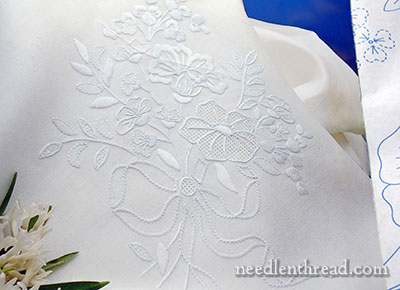
November 22, 2013
Here’s a free hand embroidery pattern for you, just in case you’re looking for something fun to work on over the weekend.
This is a little doodle I doodled up, using a Jacobean design from an old book as the basis of it, and then altering it as I doodled along.
The original design can be found in Jacobean Embroidery: Its Forms and Fillings by Ada Wentworth Fitzwilliam & A. F. Morris Hands, which is available free in many formats on Project Gutenberg. You’ll find the original Jacobean leaf design here, plate 16 in the book.
You might also recognize hints of the design in my Jumble Lattice Sampler, which was originally called a Jacobean Jumble. Believe it or not, this design played a part in the original doodle for that.
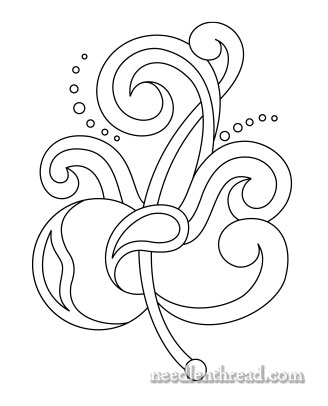
November 21, 2013
Lighting is one of those subjects that should be near and dear to every embroiderer’s heart.
And eyes.
I needed a little light – something I could use inside the house in the evenings that wouldn’t bother the rest of the family, something I could use in the car, and something that would work well in hotel rooms, without having to tote a larger light around with me. (Have you ever noticed that hotel room light is never adequate for needlework?!)
Enter a little light that’s bright, bright, bright – the Beam N Read light. It makes a great little traveling companion for the needleworker. If you want a portable light that’s usable in the car, that’s easy to take to needlework classes, that doesn’t take up room in your living room, and that’s affordable, you might take a look at this one.
Here’s my review of the Beam N Read light as used while embroidering, with pros and cons.
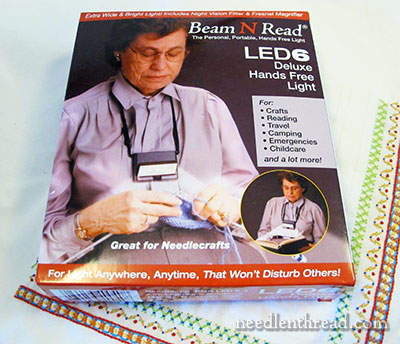
November 20, 2013
Cotton tulle is a machine made, hexagon net used in lace making techniques such as Carrickmacross lace, Limerick lace (which often involves tambour chain stitch), Coggeshall lace, tambour lace in general, and in all kinds of other embroidered laces made on net grounds.
I used cotton tulle in the tambour embroidery video that I shared with you the other day – not so much because I use tulle as a ground fabric very often, but because you could easily see what’s going on behind the fabric.
But the use of the cotton tulle generated some questions, which are worth addressing.
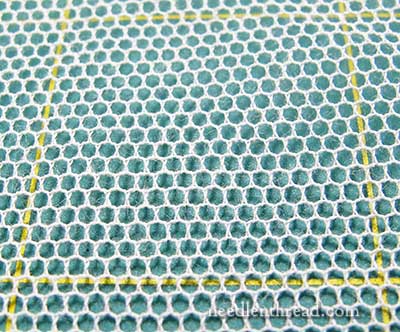
November 19, 2013
Do you ever find yourself, mid-embroidery-project, facing a problem that you knew you should have addressed much sooner?
Well, that’s where I’ve been lately with the Mission Rose. There is a problem with it. And, like many problems that we run into on needlework projects, just the mere thought of the problem and how to rectify it was slowing me down.
But, just like with many problems we face in life, if we avoid it, it just gets bigger! Before you know it, you’ve got a proverbial Mountain where there should just be a wee Mole Hill. And most of that mountain is built in our minds, more than in reality. That is certainly the case with this problem on the Mission Rose.
The problem needs addressing. I can’t fudge it and make do. I needs must correct it, in order to move on with confidence in a decent outcome.
And so… here’s the problem, and my solution.
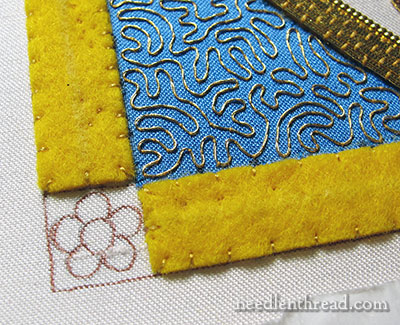
November 18, 2013
We’ve been talking a lot about tambour embroidery recently, and since I promised a tutorial for you, here’s a video on the basic stitch!
The very best way to get familiar with tambour embroidery is just to do it – that is, sit down with a hook, a piece of fabric in a hoop, and some thread, and try it. Work your way through the basic movements of the stitch, until you understand how it works. Start by stitching in one direction – the direction that’s most comfortable for you – and keep practicing in that direction, until you have the movement of the hook down.
From that point, it’s just a matter of practice. And more practice. And even more practice!
Practice until you’re comfortable with the hook. Practice until you can stitch in all directions with it. The more you practice, the more the stitch makes sense, and the easier it becomes to stitch in all directions.
To get you started, then, I’ve worked up a how-to video for the basic chain stitch with the tambour hook.
